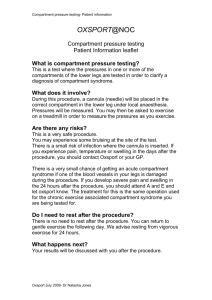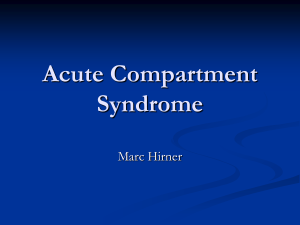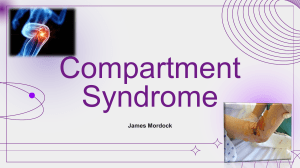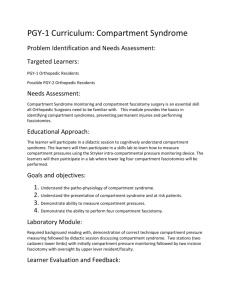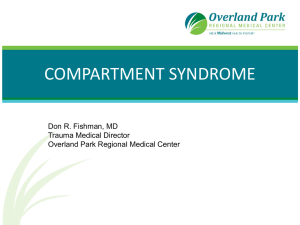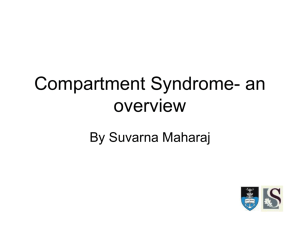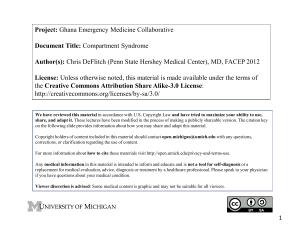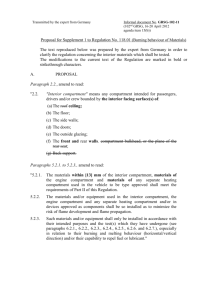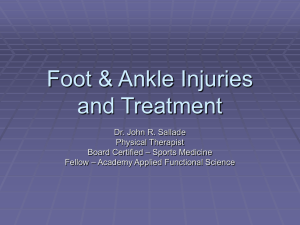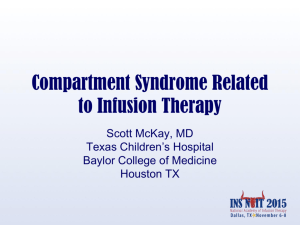Compartment Syndrome - faculty at Chemeketa
advertisement
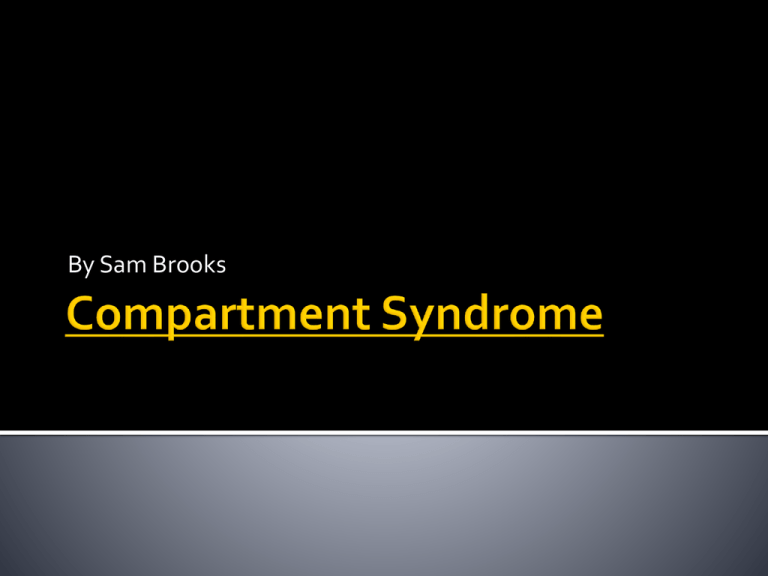
By Sam Brooks Compartment syndrome is an acute medical condition when blood vessels and nerves are compressed causing tissue death and nerve damage. The “compartment” is the thick layers of fascia that surround muscle groups. This connective tissue does not stretch. With any bleeding or swelling of the muscle inside the compartment, this will cause pressure to increase dramatically. Pressure is normally almost zero mmHg. When the pressure is thirty mmHg or more it starts to cause damage. When the difference between diastolic blood pressure and the compartment pressure is less than 30mmHg, it is considered an emergency. This pressure is tested by inserting a needle connected to a pressure meter directly into the muscle. Mainly Tibia and forearm fractures, but can include other fractures Ischemic reperfusion following injuries Hemorrhages Vascular punctures Intravenous drug injection Casts Prolonged limb compression Crush injuries Burns Creatine monohydrate Repetitive heavy muscle use (Chronic Compartment Syndrome) High velocity injuries 5 P’s associated with Compartment Syndrome Pain: Deep, constant, poorly localized pain, out of proportion pain to what is expected, stretching specific muscles causes immense pain, analgesia pain medications have almost no effect. Paraesthesia: Pins and needles sensation. Pallor: Pale or pasty looking skin. Paralysis: Complete loss or impairment of voluntary muscles, or sensation of “falling asleep”. Pulselessness: No pulse palpated, its usually one of the last signs. Affected area is usually firm and feels stiff. The main treatment for almost all compartment syndrome cases is fasciotomy. There is subcutaneous and open fasciotomy. In this surgery cuts are made along the fascia to relieve the pressure. Usually 48 to 72 hours the swelling will go down and the wound is sutured. Sometimes skin grafts are needed to completely close the wound. Conservative treatment for compartment syndrome includes: Rest Anti-Inflammatory drugs Elevation of limb Manual decompression Acupuncture If compartment syndrome is left untreated, tissue death and amputation can happen. Chronic Compartment Syndrome (CCS) is fairly rare, but treated mainly with conservative treatment. CCS is usually caused by running or extensive weightlifting. Pain and disability is usually associated with CCS. Office of Rare Diseases (ORD)of the National Institutes of Health declared compartment syndrome as a rare disease. Compartment syndrome affects less than 200,000 people in the US population each year. As EMS workers we can be aware of the possibility of compartment syndrome, and give a good assessment and report. We can give conservative treatment but ultimately fasciotomy is needed. Compartment syndrome is usually secondary to other injuries which need to be treated first. www.wikipedia.com www.google.com – images www.yahoo.com –images www.healthline.com www.askjeeves.com -images
